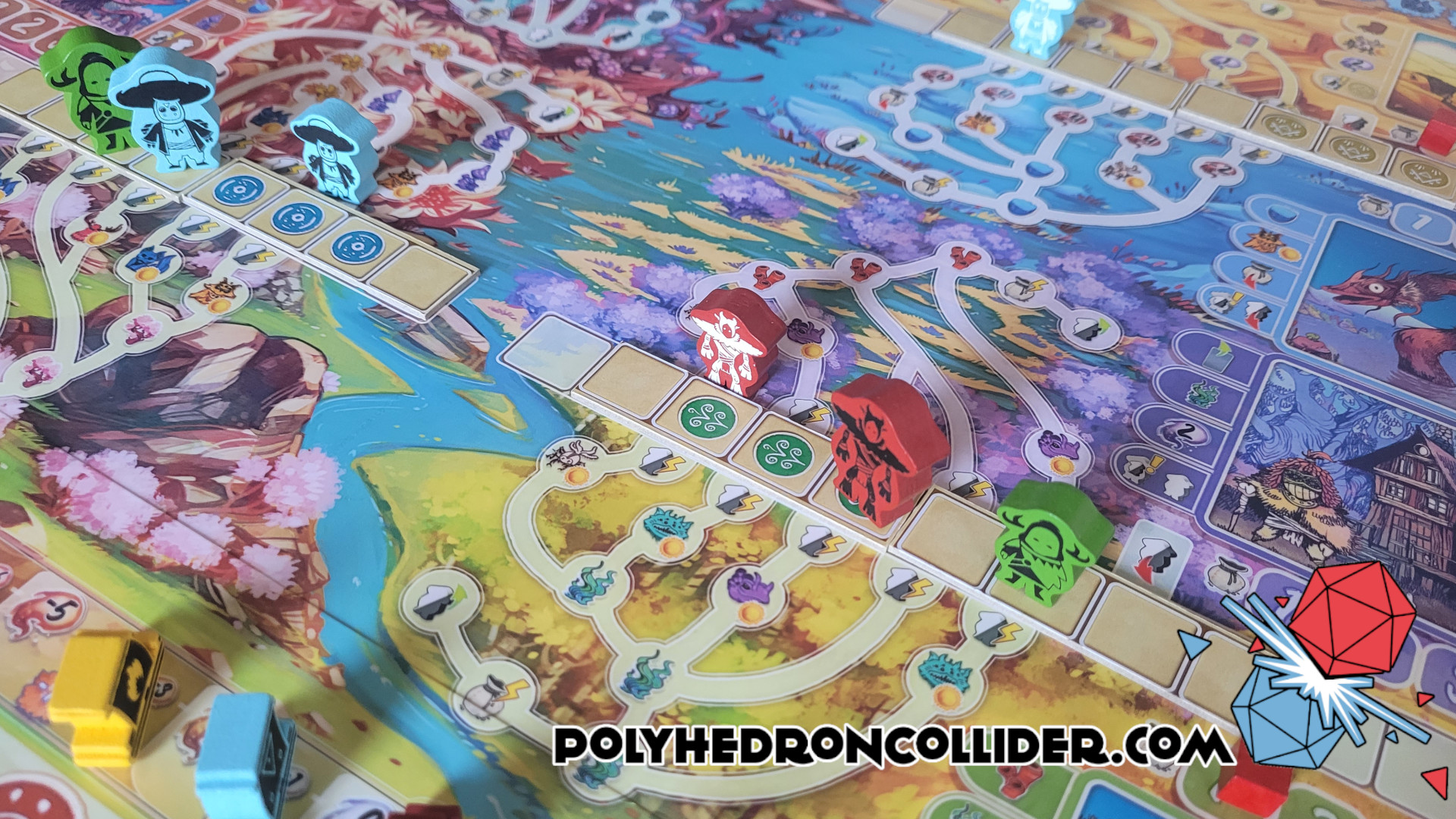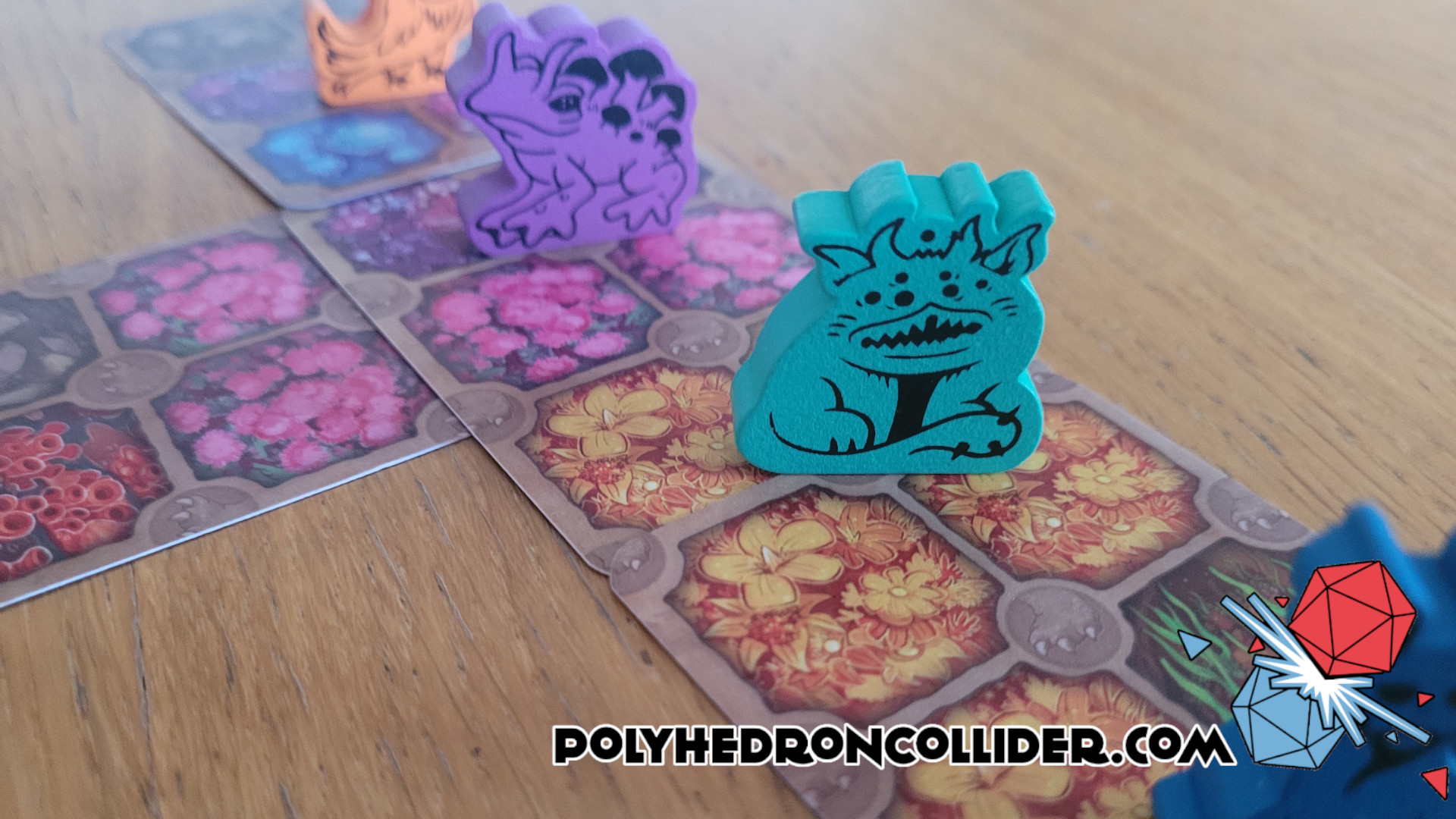Arborea is a fantastic explosion of colour, intricate detail and a devilish knot of strategy. There is a lot going on, a lot for your eyes to take in and a lot to think about, but once you pare it all back, the premise of the game is straightforward, it’s a worker placement game, after all, so your turn comes down to placing a worker, activating workers and clearing down your turn. Keep these three things held firmly in your mind and you will make it through this game.
Arborea challenges players to build their ecosystems up around their village – or as I like to think of it, their little garden and the point of this garden is to encourage the land’s magical creatures to come back into this once flourishing land and inhabit it. This ultimately is your goal, and although there are a few other ways to pick up points in the game this is what you need to focus on, everything you do needs to have this at its centre. It’s easy to get side-tracked and distracted by other shiny point-scoring opportunities, and Arborea is choked full of them.
Arborea has a few interesting things going on in it, first among these is how Arborea makes use of time as a resource. To build your garden/ecosystem you need plants from those respective biomes and to bring them back to your village. This is done through the main worker placement action of a Pilgrimage. This is represented as track/tile and is a clever implementation of progressing time in that it literally moves. The more players that send workers on that pilgrimage, or, depending on which type of worker, each interaction changes how far and how fast the tile moves, each acting as a record of time spent on the pilgrimage. The longer you have a worker on a pilgrimage the greater the rewards, but, your very limited supply of workers quickly becomes engrossed on these pilgrimages. This clever mechanism is exactly that because the track progresses whenever any player interacts with it, so it is always beneficial to go on the same pilgrimage that you think other players will also do, their interaction progresses your time spent.
Another thing that is different and interesting in this game is what I like to think of as the nursery. Once these plants have been returned from the deep wood, the beach or the mountains etc. these resources are tracked in a common nursery. They can be used immediately to plant your garden and if not they will score you some points but what ultimately happens is that all players end up collaborating on this pool of resources, which in a competitive game is a really interesting aspect forcing you to think about timing your pilgrimages so that you don’t leave subsequent players with the spoils of your labour. This process also creates an individual economy, each game will ultimately be different here based on which pilgrimages players choose to invest in, a very game-specific supply and demand.
Finally, the placement and scoring of the creatures is another wonderful little puzzle. Each creature has a preference for a particular biome, and so will only score when it has more of that biome surrounding it, further certain creatures like to be close to other creatures, they have that herd mentality thing going on which means your garden needs to be wonderfully diverse to maximise on the points. This puzzle part of the game is completely insula, which means you can sit and puzzle over it while the other players are taking their turns, as once a garden card and creature are placed they can’t be moved, in many ways this part of the game feels almost like a route builder, trying to connect all of these dots in just the right way to get all the points you can.
Simply put, Arborea is a heavy euro game and having played most if not all of the previous Alley Cat Games releases I was surprised at how heavy this game is, it is a different league to the others. It still has that fantastic high production value (even at prototype) that one has come to expect from ACG, the rules are clear and concise and the board although large, busy and colourful everything is there, makes sense and is clear. There are a lot of things going on, the above really just outlines some of my favourite aspects, but I could go on and on about the Sages at the end of each pilgrimage that grants further rewards, I could talk about how you manage the creatures in your village, and the Season track and the bonuses there but believe me when I say these add more ways to score, they add more flavour to a very big and rich game.
If this sounds a game you might be interested in you can check out the Kickstarter page here
This Kickstarter preview is based on a prototype version of the game provided by the publisher; the
final product may look, play or smell different to that used in this
preview.






No comments:
Post a Comment